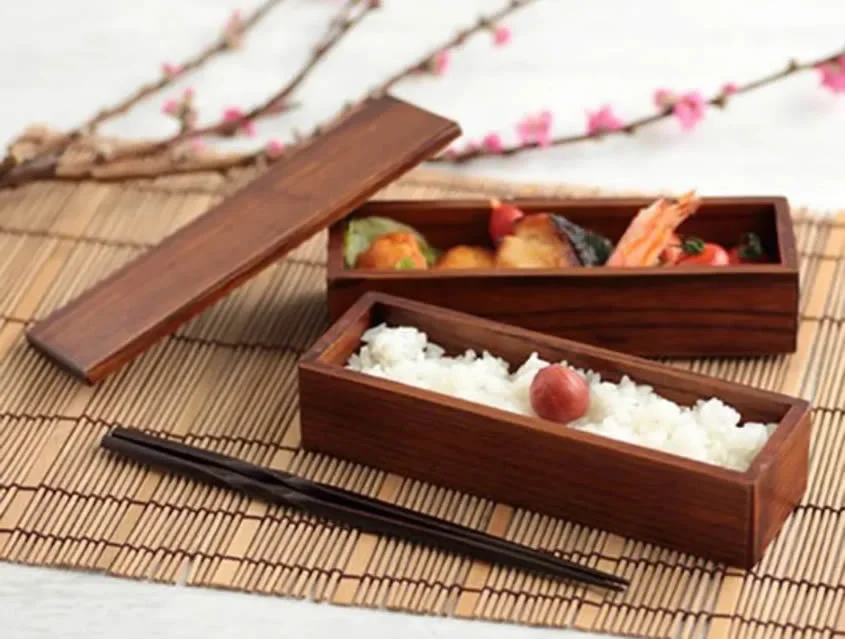How to Prepare a Japanese Lunch Box
Japanese lunch boxes have become a popular substitute for a bagged lunch for the office and school or prepare elaborate meals for the family.
The idea of packing bento may seem a little overwhelming at first, but with a little preparation and practice, the task becomes easier and is quite fulfilling.
Packing a Japanese Bento Box is a lot easier than you think. You can get creative and make your own food recipes that will be healthy, nutritious and colourful at the same time. Follow the guidelines and pack a bento lunch box that will be perfect in every sense!

Table of Contents
Begin with the best-suited Japanese lunch box
Many types of bento boxes are available, made from many materials, varying shapes, sizes, features and prices. Shop around online so that you get a feel for what’s available and decide if you are looking for a traditional Japanese lunch box that can either be made from a bio-gradable wooden bento box or ABS resin (plastic) with a wood grain finish, or you can consider the more recent style of bento boxes which are also made from plastic but look more like a school lunch box which can include several layers and include plastic cutlery.
If you are looking for new bento types, an essential must-have is a secure and leak-proof lid. This will enable you to carry soups and stews without worrying about your food leaking and messing with your bag. Another thing to consider is whether you need a flat or a cylindrical bento with compartments stacked above the other. Additionally, decide on the number of compartments that you will need for your bento lunch box.
If you choose a traditional Japanese lunch box in most cases, they are more suited to preparing an elaborate meal for yourself or the family. They can still be used at home or work through traditional styles made from a natural wood lacquered to give its authentic look, or a Shokado style that is generally a red and black ABS resin with a lacquered melamine coating to give its authentic feel. This bento-style will not be leakproof, so carrying to work its best to select the right meals to suit the occasion.
Choose the right accessories.
There are a variety of accessories that add to the ease of packing and using your bento lunch. Food dividers, cups, cutlery, chopsticks if required, side dishes and soup bowls are also available. If using Japanese tableware or a traditional style bento, consider accessories such as sushi trays, miso soup bowls, bamboo trays and placements, Donburi, Noodle, or Ramen Bowls.

Little planning is all that is needed.
A little planning before you prepare your traditional lunch box will go a long way. Decide what the main food type will be. If preparing a chicken meal that has gravy then a serving of rice will accompany the main meal, then look in the fridge or pantry to see what else you can add. A small portion of steamed or stir-fried veggies seasoned with sesame oil and topped with a sprinkling of sesame seeds goes down well. You could also consider a healthy cucumber salad. Roughly chop up half a cucumber, toss in a teaspoon of vinegar, a pinch of salt and finish it off with a few sesame seeds. Preparing a bento meal is not that hard; it just takes a little planning to make sure that you have enough to fill your bento box with the foods you love.
Can’t be bothered planning? During the week, cook 1/3 more than you normally do. Leave the leftovers in the fridge, within a few days you should have enough options to choose from making it easier for you to pack 3-4 leftover meals into a few bento boxes and all done.
Balance nutrition with aesthetics
Ensure that your bento holds the right proportion of food nutrients like proteins, carbs, vegetables, fruit and dairy. Compartmentalise your bento lunch box with the help of dividers and pack the varied food items neatly into each section of the box. You can add a dash of colour to your bento by including colourful veggies alongside the nutritional aspect. Be creative with your recipes, and this will heighten the appeal of your Japanese lunch box. It’s a good idea to pack your food items tight within the bento as that will reduce the chances of them moving inside the box. The use of skewers and dividers will make this task easier. Learn more about Japanese lunch boxes here: Wikipedia.



